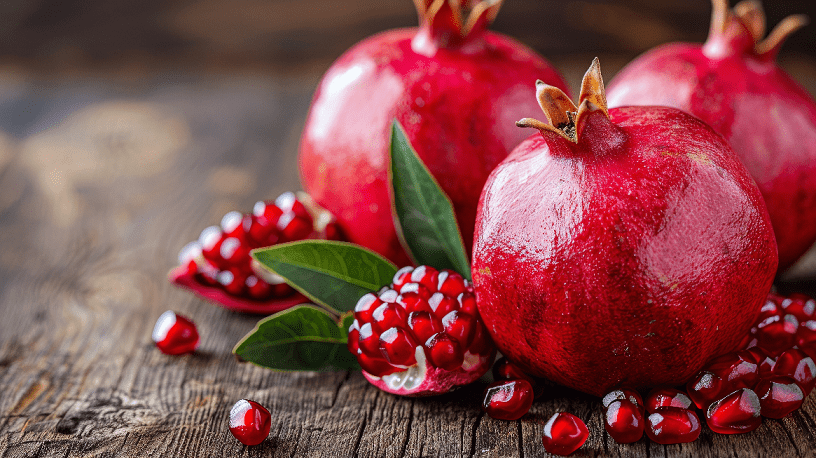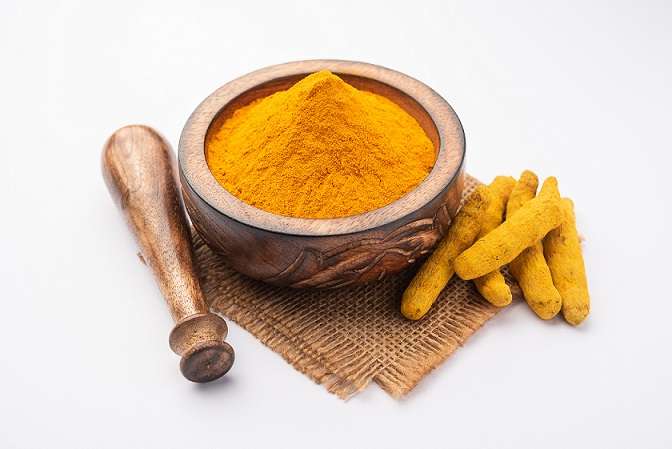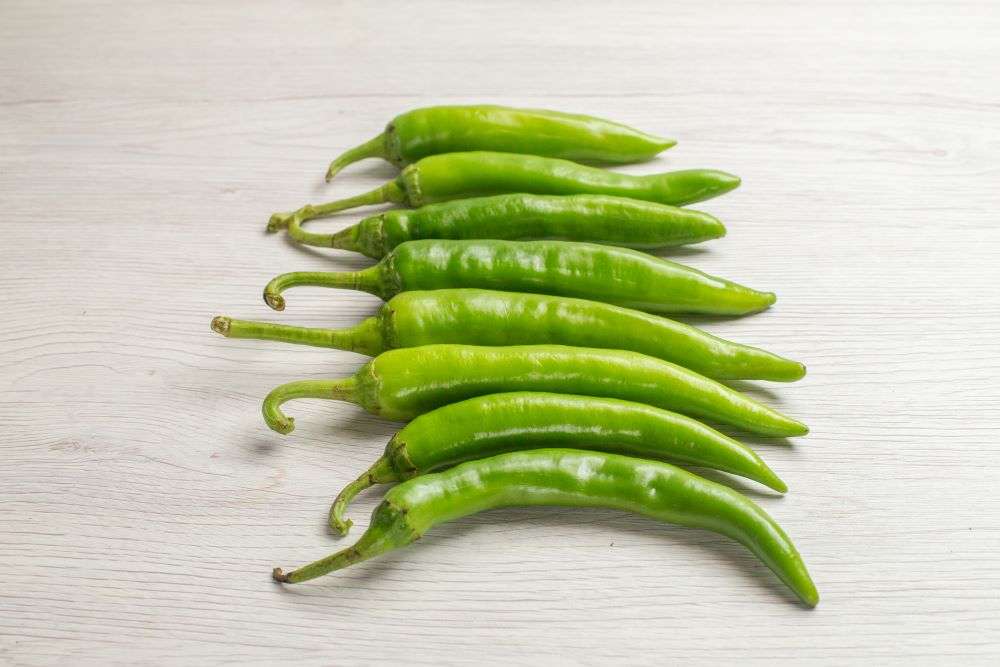India, renowned as the “fruit basket of the world,” holds the top position in global pomegranate production. The sweet and nutrient-rich pomegranates from Indian orchards are highly sought after worldwide. This blog delves into the intricate journey of these ruby-red jewels, tracing their path from the farm to international export, highlighting the processes and the significant role of Indian exporters like Indo Foods Export in reaching global consumers.
1. Cultivation: Nurturing the Gems
The pomegranate’s journey commences in the fertile lands of India, primarily in states like Maharashtra, Karnataka, Gujarat, Andhra Pradesh, and Madhya Pradesh. Farmers meticulously cultivate various in-demand varieties such as Bhagwa, Ganesh, and Mridula, each with unique characteristics appealing to different markets.
- Orchard Management: This involves careful selection of well-drained soil, proper irrigation techniques, and regular pruning to ensure optimal fruit yield and quality. Farmers also implement integrated pest and disease management strategies to protect the crop.
- Quality Control at the Farm Level: Even before harvest, quality is paramount. Farmers adhere to strict guidelines regarding the use of agrochemicals, ensuring compliance with international food safety standards. Regular monitoring and maintenance of spray records are crucial.
- Farm Registration: For export-oriented production, farms need to be registered with the Agricultural and Processed Food Products Export Development Authority (APEDA). This registration involves providing detailed information about the farm and its practices.
2. Harvesting: Picking at Perfection
Determining the optimal time for harvest is critical to ensure the desired sweetness, color, and overall quality of the pomegranates for export.
- Maturity Assessment: Experienced farmers assess the fruit’s maturity based on visual cues like skin color, crown dryness, and a metallic sound when tapped.
- Careful Picking: Harvesting is typically done manually to avoid bruising or damage to the delicate fruits. Skilled laborers carefully pick the pomegranates, ensuring they are handled with care.
- Initial Sorting: At the farm level, an initial sorting process removes any damaged or malformed fruits.
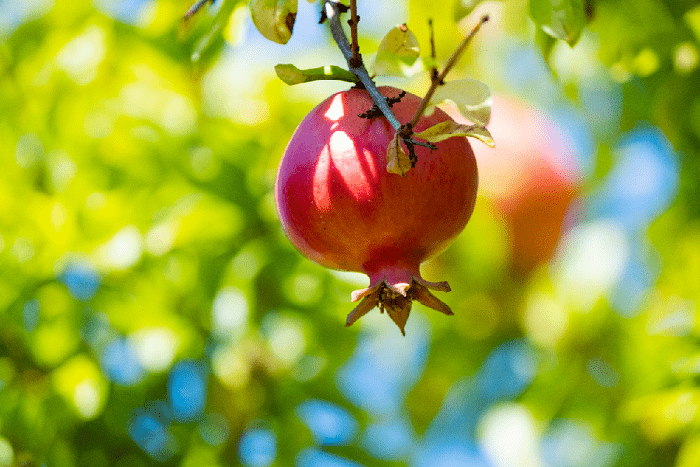
3. Post-Harvest Handling: Preserving Freshness
To maintain the quality and extend the shelf life of pomegranates destined for international markets, proper post-harvest handling is essential.
- Cleaning and Washing: The harvested pomegranates are gently cleaned to remove any dirt, dust, or field debris.
- Grading: This crucial step involves sorting the pomegranates based on size, color, and absence of defects according to established standards like Agmark. Consistent grading ensures uniformity and marketability. Machine vision technology is increasingly being explored for accurate grading.
- Pre-cooling: To slow down the respiration rate and inhibit spoilage, the pomegranates are pre-cooled in specialized units to the optimal storage temperature.
4. Processing and Packaging: Ready for the World
The way pomegranates are processed and packaged significantly impacts their appeal and condition upon arrival in international markets.
Optional Processing:
While fresh pomegranates are the primary export, some are processed into juice, arils (seeds), or powder, catering to different consumer preferences and industrial uses.
Packaging:
Pomegranates for export are typically packed in corrugated fiberboard (CFB) boxes of varying capacities (e.g., 4 kg or 5 kg). These boxes provide protection during transit.
- Cushioning: Inside the boxes, cushioning materials like paper or foam are used to prevent bruising.
- Labeling: Export packaging requires specific information, including the name of the produce, variety, origin, commercial specifications, date of packing, name of the packing organization, weight, number of fruits/size, and recommended storage temperature.
- Breathable Packaging: Using breathable materials like mesh bags or perforated containers is recommended to prevent moisture buildup.

5. Quality Control and Certification: Meeting Global Standards
To ensure that Indian pomegranates meet the stringent quality standards of importing countries, rigorous quality control measures and certifications are necessary.
- Agmark Standards: Grading is often done according to Agmark standards, a quality certification mark issued by the Government of India.
- Phytosanitary Certification: A phytosanitary certificate, issued by authorized plant protection authorities, confirms that the consignment is free from pests and diseases of concern to the importing country.
- Residue Monitoring: Regular testing for pesticide residues and other contaminants is conducted to comply with the food safety norms of international markets.
- Traceability Systems: Systems like ANARNET help in tracking the pomegranates back to the farm, ensuring transparency and building consumer confidence.
6. Transportation: Reaching Distant Shores
Transporting pomegranates to global markets requires careful planning and execution to maintain their freshness.
- Refrigerated Transport: Maintaining the cold chain is crucial. Pomegranates are transported in refrigerated containers or trucks to prevent spoilage during long journeys.
- Sea and Air Freight: Depending on the destination and urgency, pomegranates are shipped via sea or air. Sea freight is more cost-effective for bulk shipments, while air freight ensures faster delivery for markets demanding immediate availability. Recent initiatives have focused on increasing sea shipments to optimize costs.
- Palletization and Stacking: Boxes are typically palletized and secured with shrink wrap to ensure stability during transit. Proper stacking with ventilation gaps is important for maintaining air circulation.
7. Export and Distribution: Connecting with Global Consumers
Indian exporters play a pivotal role in bridging the gap between local farms and international markets.
- Exporter Roles: Exporters like Indo Foods Export manage the entire export process, from sourcing the pomegranates to handling documentation, quality checks, packaging, and logistics. They establish connections with international buyers and distributors.
- Market Access: Gaining market access to different countries involves understanding and complying with their specific import regulations, phytosanitary requirements, and quality standards. Government initiatives and APEDA facilitate this process.
- Major Export Destinations: Key markets for Indian pomegranates include the Middle East (UAE, Saudi Arabia, Qatar), Europe (UK, Netherlands, Germany), North America (USA), and parts of Asia (Bangladesh, Sri Lanka, Malaysia). The demand in Australia is also growing.
8. Challenges and Opportunities:
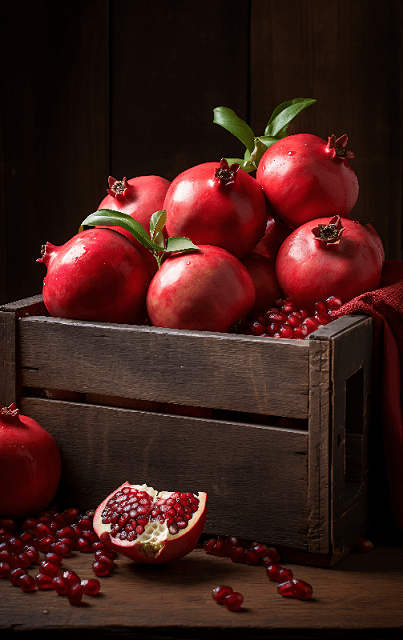
Despite being a leading producer, India faces certain challenges in maximizing its pomegranate exports.
- Inconsistent Quality: Maintaining consistent quality across different regions and seasons can be a challenge.
- Inadequate Infrastructure: Insufficient cold chain infrastructure and logistics can lead to post-harvest losses.
- Stringent International Standards: Meeting the diverse and often stringent quality and phytosanitary standards of various importing countries requires continuous effort.
- Competition: India faces competition from other pomegranate-exporting countries like Spain, Turkey, and Iran.
However, there are significant opportunities for growth:
- Increasing Global Demand: The rising global awareness of the health benefits of pomegranates is driving demand.
- Government Support: Initiatives by the Indian government and APEDA to promote agricultural exports, provide financial assistance, and facilitate market access are crucial.
- Varied Agro-climatic Conditions: India’s diverse climate allows for a longer pomegranate supply window compared to some other countries.
- Growing Focus on Quality: Increasing emphasis on quality control and traceability can enhance the reputation of Indian pomegranates in the global market.
Recent positive developments are further bolstering India’s pomegranate export prospects. The successful completion of the first-ever sea shipment of Indian pomegranates to Australia, facilitated by APEDA, marks a significant step towards more cost-effective bulk exports and expands market access during Australia’s off-season. This achievement, highlighted by the Press Information Bureau underscores India’s growing capability to meet global quality standards and strengthens its position as a key player in the international pomegranate market.
Indo Foods Export: A Catalyst for Global Reach
Companies like Indo Foods Export act as crucial intermediaries, streamlining the complex process of taking pomegranates from Indian farms to consumers worldwide. We invest in infrastructure, maintain stringent quality control measures, navigate international regulations, and build strong relationships with both farmers and global buyers. Our expertise and commitment are vital in ensuring that the freshness and quality of Indian pomegranates are preserved throughout their journey to international markets, contributing significantly to India’s agricultural export success.
The journey of the Indian pomegranate from a budding flower in a Nashik orchard to a prized fruit in a European supermarket or a Middle Eastern market is a testament to the dedication of Indian farmers, the efficiency of post-harvest management, and the crucial role of exporters in connecting local produce with global demand. As India continues to focus on quality and infrastructure development, the sweet taste of its pomegranates will likely reach even more corners of the world.

